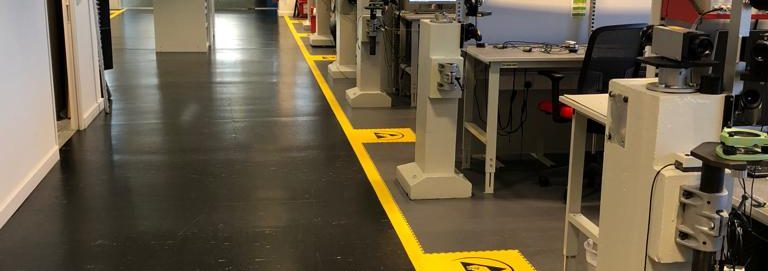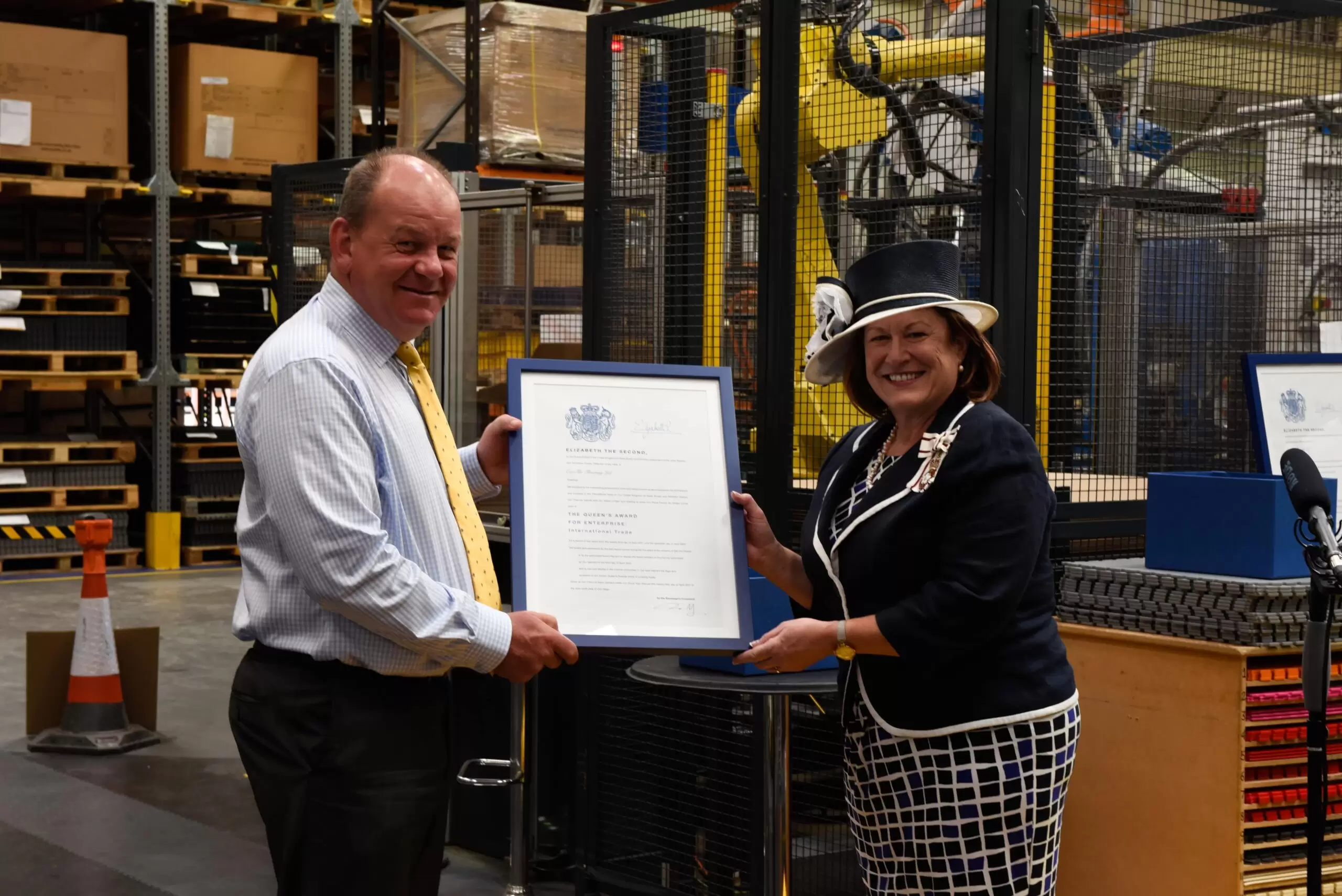
Ecotile as a floor product cannot and will not generate static by itself, it will be caused by a combination of events including the type of activity taking place on site, what other equipment or machinery, packaging materials or processes are being carried out, the operative footwear, atmospheric conditions or any combination of any of these circumstances. If you have only started to experience the static shocks since installing your new ecotile floor the chances are that your old floor was either concrete or wood, materials that have hygroscopic properties (i.e. will attract moisture from the air), the moisture helps minimise the build-up of static. If your operatives wear footwear with insulative soles such as trainers or rubber soled safety boots they may be building up static in their bodies caused by the friction created between the insulative sole of their footwear and the ecotile.
Immediate Solutions
1. Touch a metal object using another metal object to release static discharge. This allows sparks from the discharge to affect the metal object, and not your skin. For example, touch a doorknob using a key instead of your hand at first to lower the risk for electric shock.
2. Avoid wearing clothing made from wool and synthetic fabrics. Wool and synthetic fabrics such as polyester, rayon, and spandex are more prone to rub together and create friction and static electricity.
3. Wear Antistatic (also called low charging) footwear or use heel straps or a wrist strap will help reduce electrostatic build-up between the operative and the floor and will help dissipate electrostatic charges.
4. Increase humidity levels in your environment. Dry, cold environments with low humidity levels generate a higher level of static electricity. Consider using a humidifier in your home or office to achieve between 35 and 50 percent humidity.
5. If you have specific problems with a machine, filing cabinet etc. make sure that the metal surface is earthed, alternatively ground the static by touching a grounded appliance, wiring a ground circuit, or by applying a neutralizing charge. Static only accumulates and causes a problem in areas where the charge cannot escape.
Long Term Solutions:
6. Use the correct cleaning and maintenance routine – Clean and maintain the floor using ecotile’s recommend anti-static cleaner. Mix with water at 20:1 and use as your daily or weekly cleaning regime. The cleaning chemical will leave an anti-static residue on the surface of the tile that will reduce the risk of static build up. (Please see EcoTile Cleaning Guidelines).
7. Alternatively, apply our ESD floor polish to the tiles to create and ESD / Static Dissipative floor Surface. (Please see EcoTile Cleaning Guidelines).
If you require any further advice or assistance, please contact ourTechnical department on 01582 788232

CEO and founder James Gedye has established Ecotile as the leading provider of interlocking floor tiles to the UK and around the world. Founded in 1996 from his bedroom turned office, James has built Ecotile into a multi-million-pound business, with sustainability still at the heart of his vision.
Based in Luton, Bedfordshire, Ecotile remains a privately owned UK manufacturing company, precision engineering all products in a purpose-built ISO accredited factory.
Leading the company to 2 prestigious Queens Awards in 2017 for Enterprise for Innovation and International Trade, these accolades underline James’ desire to create the highest quality products and fly the flag for British manufacturing. Working directly with leading businesses for over 25 years, James’ Ecotile brand has become synonymous with trust.
Used by 1000s of leading businesses, trusted by the MoD and specified by contractors, Ecotile floor tiles can be found across the world.
Connect or follow James on LinkedIn…

